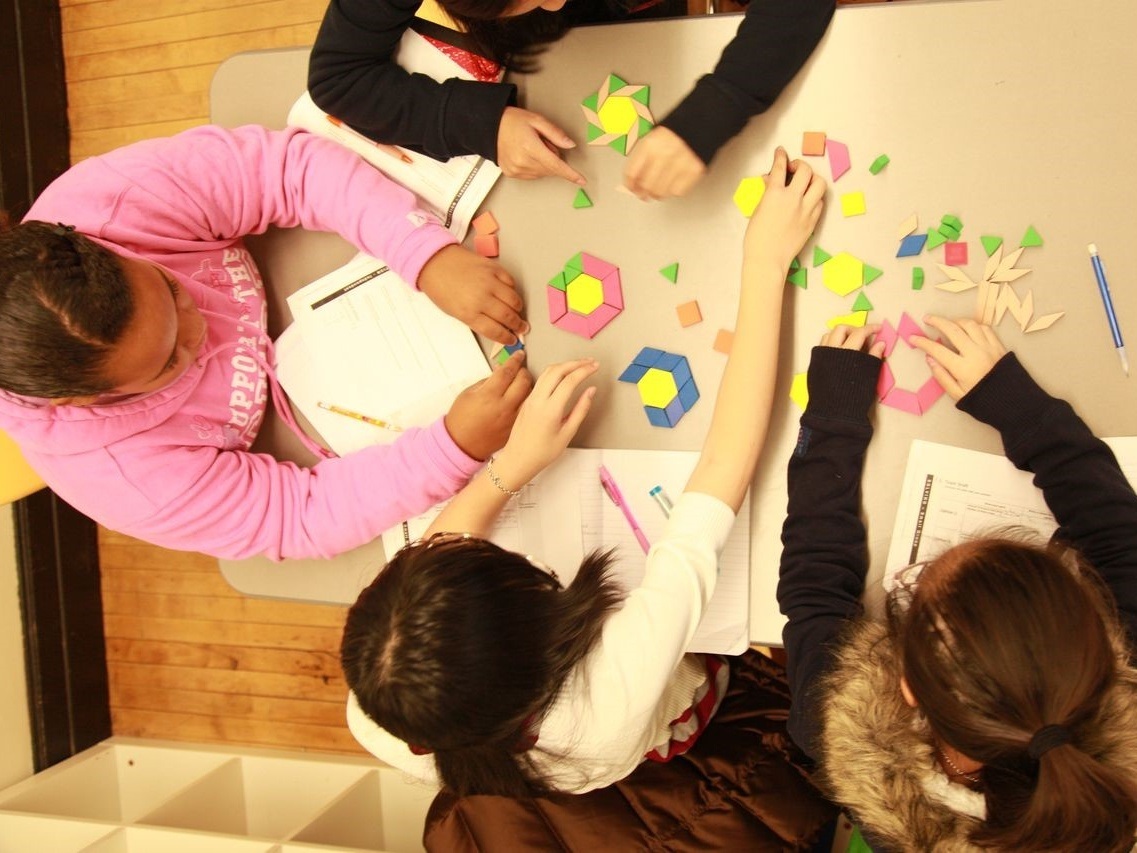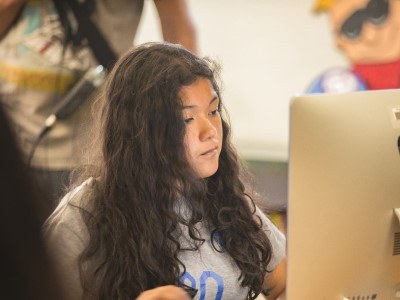Informal Huddle Learning Spaces Increase Peer-to-Peer Learning and Reduce Stress
Topics
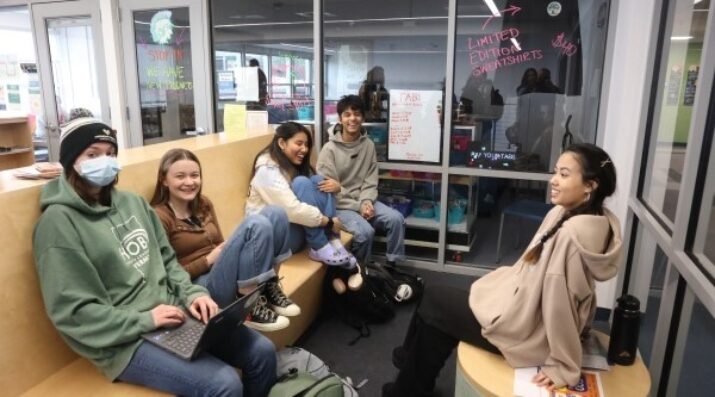
We’ve all had the experience of truly purposeful, authentic learning and know how valuable it is. Educators are taking the best of what we know about learning, student support, effective instruction, and interpersonal skill-building to completely reimagine schools so that students experience that kind of purposeful learning all day, every day.
Informal huddle learning spaces are small, flexible, and comfortable areas designed to encourage spontaneous collaboration, discussion, and peer-to-peer learning.
Innovations in teaching and learning have had little impact on modern space planning and school architecture. We know that students and teachers do better when they have variety, flexibility, and comfort in their environment. This series examines how next generation learning spaces impact the learning experience for students and their teachers. If you have the opportunity to design a new school building or renovate an existing building, or if you are interested in using space better in your school, this series can help ensure that the physical spaces in your building promote the skills students need to thrive and contribute to an ever-changing global society.
Informal huddle learning spaces are an innovative approach to transforming the learning experience. By offering a flexible, student-driven environment, these spaces support collaboration, creativity, and peer learning. They foster important 21st-century skills such as communication, teamwork, and problem-solving, all while making learning more engaging and accessible. With the right design and thoughtful implementation, huddle spaces can become hubs of creativity and learning in schools, helping students develop both academically and socially.
Informal huddle learning spaces in schools are small, flexible, and comfortable areas designed to encourage spontaneous collaboration, discussion, and peer-to-peer learning. These spaces typically consist of informal seating arrangements such as bean bags, lounge chairs, or movable tables, allowing students to gather in groups, share ideas, and work together outside of a traditional classroom setting. The idea is to create an environment that fosters creativity, communication, and critical thinking, without the constraints of formal instruction or rigid classroom layouts.
Conversations using a seminar and huddle approach happen in a medium-sized grouping. Learners participate in focus groups with a diversity of student learning objectives. This method involves students taking turns, which helps them build their listening, observing, and analytical skills. These spaces require minimum reflective surfaces with optimal acoustical properties on the floors and walls and adequate lighting for visual requirements. Seminar and huddle activities may include inquiry, storytelling, critical review procedures, multifaceted conversations, and reciprocal teaching instruction.
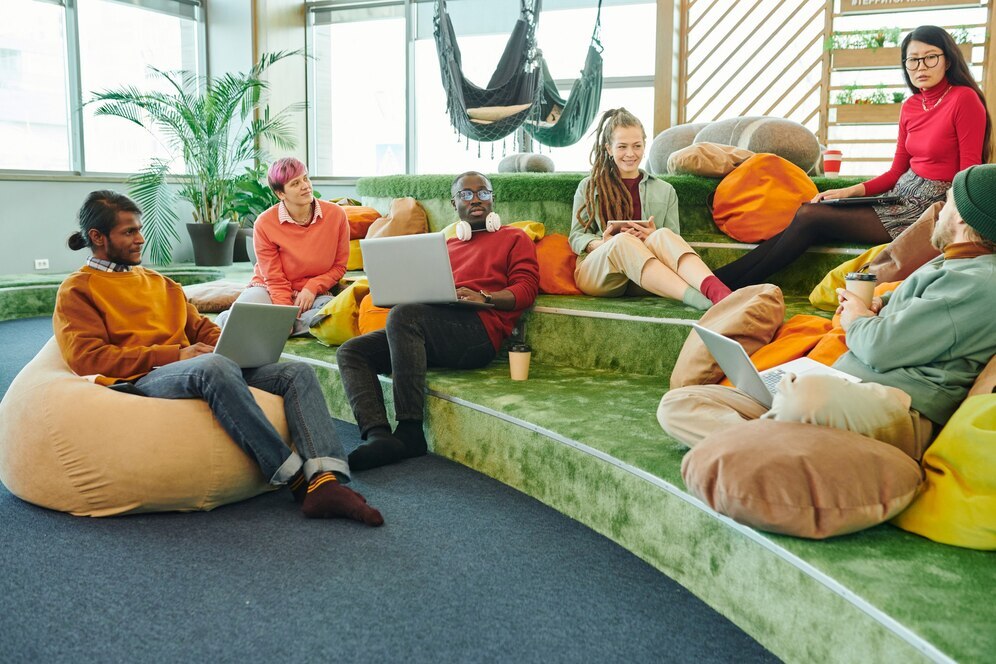
Credit: pressmaster on Freepik
A. Encouraging Collaboration and Social Learning
At the heart of huddle learning spaces is the opportunity for collaborative learning. Students can gather in small groups to discuss concepts, brainstorm ideas, or solve problems together. This setup mirrors real-world situations where teamwork and collaboration are essential, helping students develop important interpersonal skills like communication, negotiation, and conflict resolution. It provides a relaxed environment where students feel comfortable sharing ideas without the pressure of a formal classroom setting.
B. Promoting Active, Student-Centered Learning
Unlike traditional classrooms where the teacher is the central figure in delivering knowledge, huddle spaces allow for student-centered learning. In these spaces, students take the lead in their learning, directing conversations, asking questions, and teaching each other. This encourages a deeper understanding of the material, as students explain concepts to their peers and gain insights from different perspectives.
C. Flexible, Adaptive Environments
One of the key features of huddle learning spaces is their flexibility. These areas can be easily reconfigured to suit the needs of different activities. Furniture can be rearranged to accommodate small groups or large gatherings, and spaces can be adapted for various purposes, whether it’s for casual group discussions, brainstorming sessions, or hands-on projects. This adaptability makes the space conducive to a wide range of learning styles and activities.

Credit: freepik
D. Fostering Creativity and Innovation
In an informal huddle space, students are more likely to take risks and think outside the box. The casual nature of the space reduces the fear of making mistakes, allowing students to freely experiment with new ideas. Whether they’re engaged in creative brainstorming or problem-solving, these spaces encourage innovation by allowing students to approach challenges in unconventional ways.
E. Breaking Down Social Barriers
Huddle learning spaces often encourage students to interact with others outside of their regular friend groups or academic tracks. These environments foster inclusivity, where students from diverse backgrounds, grades, or interests can come together, share ideas, and collaborate. This not only enriches their learning experience but also promotes social cohesion and empathy among students.
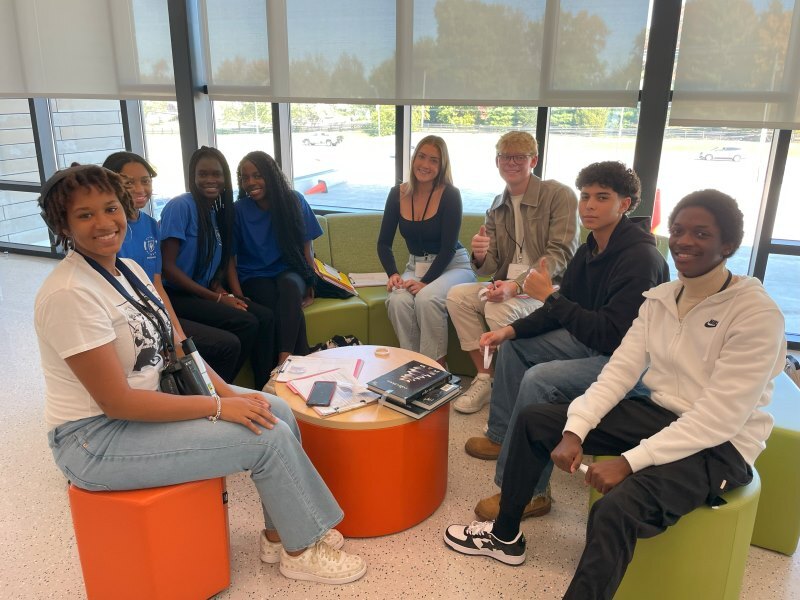
Credit: Photo of STEAM Academy in Lexington, Kentucky, by Brian Ambrose for NGLC
F. Supporting Diverse Learning Styles
In a traditional classroom, some students may struggle with the passive, one-size-fits-all model of instruction. In contrast, huddle spaces cater to a variety of learning styles by providing options for visual, auditory, and kinesthetic learners. For example, students who learn best through discussion or physical movement might find these spaces particularly effective. The informal atmosphere also allows for different forms of expression, whether through conversation, hands-on exploration, or digital tools, making it easier for all students to engage.
G. Encouraging Peer-to-Peer Mentoring
Informal huddle spaces create the perfect environment for peer mentoring. In these settings, more experienced students can assist their peers with difficult concepts, reinforcing their own learning while helping others. This mutual exchange fosters a sense of community and cooperation, where students take responsibility for each other’s success. Teachers can also observe these interactions and step in when necessary to guide or provide additional support.
H. Reducing Stress and Increasing Engagement
The informal nature of huddle spaces creates a less stressful learning environment. Students who might feel anxious or disconnected in a traditional classroom may find that these relaxed spaces help them feel more comfortable and willing to engage. The less rigid, more interactive layout helps keep students energized and motivated, making learning feel less like a chore and more like an enjoyable, collaborative experience.
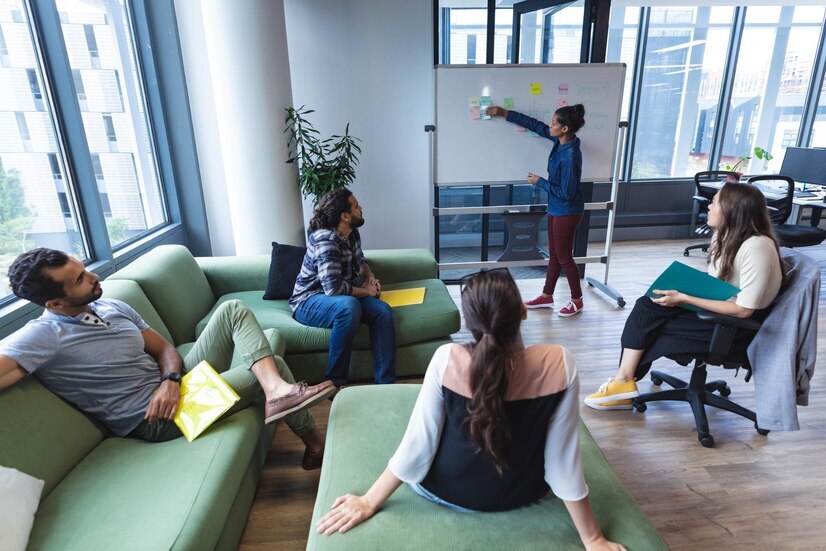
Credit: Wavebreak Media on Freepik
I. Integration of Technology
Huddle learning spaces can easily incorporate technology to enhance learning experiences. With portable devices such as tablets, laptops, or even interactive whiteboards, students can access information, collaborate digitally, or create multimedia projects together. The integration of tech tools allows for real-time research, sharing of resources, and collaborative presentations, expanding the learning possibilities beyond just the physical space.
J. Fostering a Growth Mindset
Because the huddle space encourages discussion, brainstorming, and trial-and-error learning, it naturally promotes a growth mindset. Students learn that intelligence and skills are developed through effort, persistence, and collaboration rather than through innate talent. They are more likely to embrace challenges, make mistakes, and learn from them in a supportive, nonjudgmental environment.

Features of this huddle space at Winooski Middle/High School (VT) for small group meetings/peer tutoring include transparency between interior and exterior, fixed or movable displays, brainstorming powered by dry-erase surfaces. Credit: Brian Ambrose for NGLC
Learn More
See the whole series about next gen learning spaces.
Photo at top of Winooski Middle/High School in Vermont, by Brian Ambrose for NGLC


